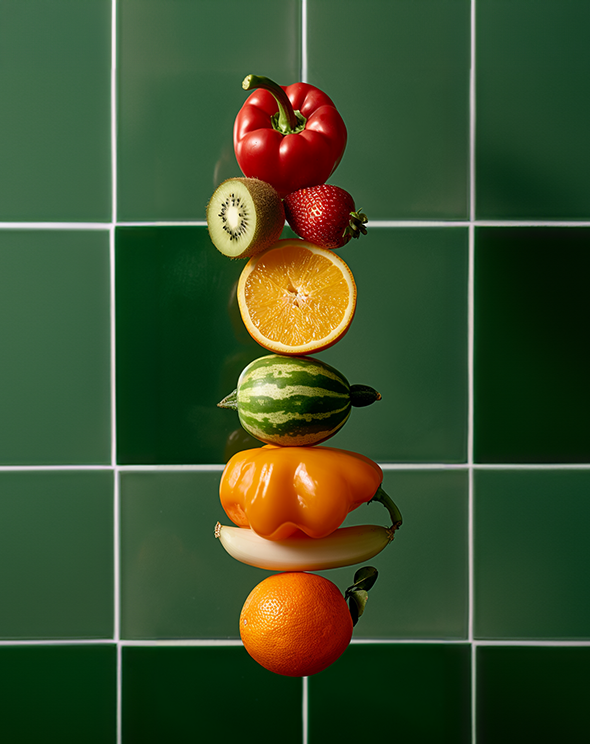This article originally appeared in Retail Touchpoints.
In today’s dynamic retail landscape, characterized by shifting consumer behaviors and evolving preferences, the traditional approach to real estate and store formats is undergoing a significant transformation.
As foot traffic declines, exacerbated by the pandemic and the proliferation of delivery options, retailers are compelled to reassess their strategies. Some, like Target, are expanding their footprint with larger stores, while others, such as Sprouts Farmers Market, are doubling down on the small format. Amidst this flux, Best Buy is exploring new formats, Walmart is planning extensive renovations, Amazon is venturing into lower-priced chains and Whole Foods is introducing small-format stores tailored for quick-trip urban consumers.
As retailers diversify their real estate portfolios to adapt to changing consumer demands, managing in-store brand experiences across various formats becomes increasingly challenging. How can retailers ensure that the carefully curated in-store shopping experiences they’ve designed remain consistent across these new formats and evolving footprints? What advantages does maintaining this consistency yield, and what risks are associated with misalignment?
Let’s delve into why simplicity matters more than ever to the consumer experience and how small-format stores can excel in delivering it, but also need to watch out if they don’t meet expectations.
Streamlined shopping experience
In a world inundated with choices and distractions, consumers crave simplicity in their shopping experience.
Small-format stores can strip away the excess, offering a carefully curated selection of products that meet the essential needs of consumers without overwhelming them with options and enabling them to get in and out quickly. By focusing on the most relevant merchandise, these stores can make the shopping process more straightforward and enjoyable for customers. Consider the well-known Jam Study in 2000: if you give consumers 24 flavors of jam to choose from, they are 10X less likely to actually buy a jar. The small-format store, due to space constraints alone, avoids this issue.
Whole Foods Market Daily Shop, the planned smaller sibling of its flagship stores, will hopefully capitalize on and enhance the perceived simplicity of shopping at Whole Foods. Assuming a thoughtfully curated assortment of natural and organic groceries, household essentials and prepared foods, these compact stores should offer a convenient one-stop shopping destination for health-conscious consumers. By eliminating unnecessary complexity and clutter, Whole Foods Market Daily Shop could deliver a more convenient shopping experience that should resonate with the busy urban shopper.
Whole Foods was crowned the simplest brand in the U.S. in our latest World’s Simplest Brands study, with consumers finding that they could much more easily make healthy food choices shopping there. If successful, the smaller-format stores should only enhance this benefit, especially assuming that Amazon’s ability with logistics and data analysis will ensure the offerings are just right.
Clarity in communication
In an era of information overload, simplicity in communication is paramount. One critical potential pitfall for small-format stores is that consumers won’t know what to expect: what does this store have (or not have) compared to the main one?
Small-format stores must convey their value proposition clearly and succinctly, making it easy for consumers to understand what sets them apart and why they want to go there. Whether through signage, packaging or store layout, these stores need to prioritize simplicity in their communication strategy, ensuring that customers can quickly grasp the benefits of shopping with them as well as their distinctions from the full-size stores.
Target is an interesting counter-example, as it seems to be moving away from small-format stores, having closed a few in 2023, to concentrate on opening larger stores with better express checkout. Rather than providing a smaller, targeted selection, the apparent focus is to have shoppers see Target as the essential one-stop shop for all their needs, and focus on expediting how they can get customers in and out rather than reduce the selection or size of the store.
Instead of branding and strongly communicating the difference of smaller-format stores, as they had in the past with TargetExpress and City Target (both retired), it is branding and putting the communication focus on the Express Self-Checkout.
Innovative and intuitive store design
Simplicity, however, extends beyond product offerings to encompass store design and layout.
Small-format stores need to prioritize simplicity in their physical environment, employing intuitive layouts and clear signage to guide customers through the shopping journey effortlessly. The traditional larger-format stores are typically laid out to maximize the likelihood of shoppers buying more than they set out to, which is why the most purchased products are in the back of the store. By turning this paradigm on its head, the small-format stores can enhance the overall shopping experience and foster a greater sense of ease for consumers.
Amazon Go, the cashierless convenience store concept pioneered by the ecommerce giant, takes it one step further by removing the need to wait in line and pay. With its sleek and minimalist aesthetic, coupled with advanced technology that enables frictionless shopping, Amazon Go can redefine convenience for consumers. By removing the need for checkout counters and streamlining the entire shopping process, Amazon Go sets a new standard for simplicity in brick-and-mortar retailing.
However, on a recent visit to its first New York City location, product selection and quality seemed lacking and more akin to what you would find in a gas station rest stop. The easiest, most user-friendly store design will not succeed unless the offering also appeals.
Personalized and relevant offerings
Simplicity does not mean one-size-fits-all; rather, it entails offering personalized and relevant products to meet the diverse but exact needs of consumers.
Small-format stores can excel in this regard, leveraging data and consumer insights to tailor their product offerings and services to the specific preferences of their target audience and location. By delivering precisely what customers need, when and where they need it, these stores will differentiate and build trust and loyalty among consumers.
Ikea Planning Studios, the small-format store concept focused on home planning and design services, is an interesting example. Ikea’s bold strategy is to become more accessible to urban shoppers while leveraging the trend of more online shopping.
By providing a curated selection of Ikea products aligned to the specific needs of urban shoppers (such as a focus on smaller-format kitchens) and personalized design consultations, these stores empower customers to create living spaces that reflect their unique style and preferences. Through simplicity in offering and personalized service delivery, Ikea Planning Studios makes Ikea more relevant to the smaller-space urban apartment dweller.
In essence, small-format retail stores demonstrate that simplicity is not merely a design principle but a philosophy that should guide every aspect of the customer experience. By embracing simplicity in product offerings, communication, design and personalization, these stores can become key destinations for consumers seeking a more accessible and relevantly curated shopping experience.
However, to succeed in deploying-small format stores, retailers must ensure all aspects align to create the optimal streamlined shopping experience: one miss, whether misjudging necessary product selection or not differentiating clearly enough in communication, could be fatal to the strategy.
Brian Rafferty is Global Director, Business Analytics & Insights.


